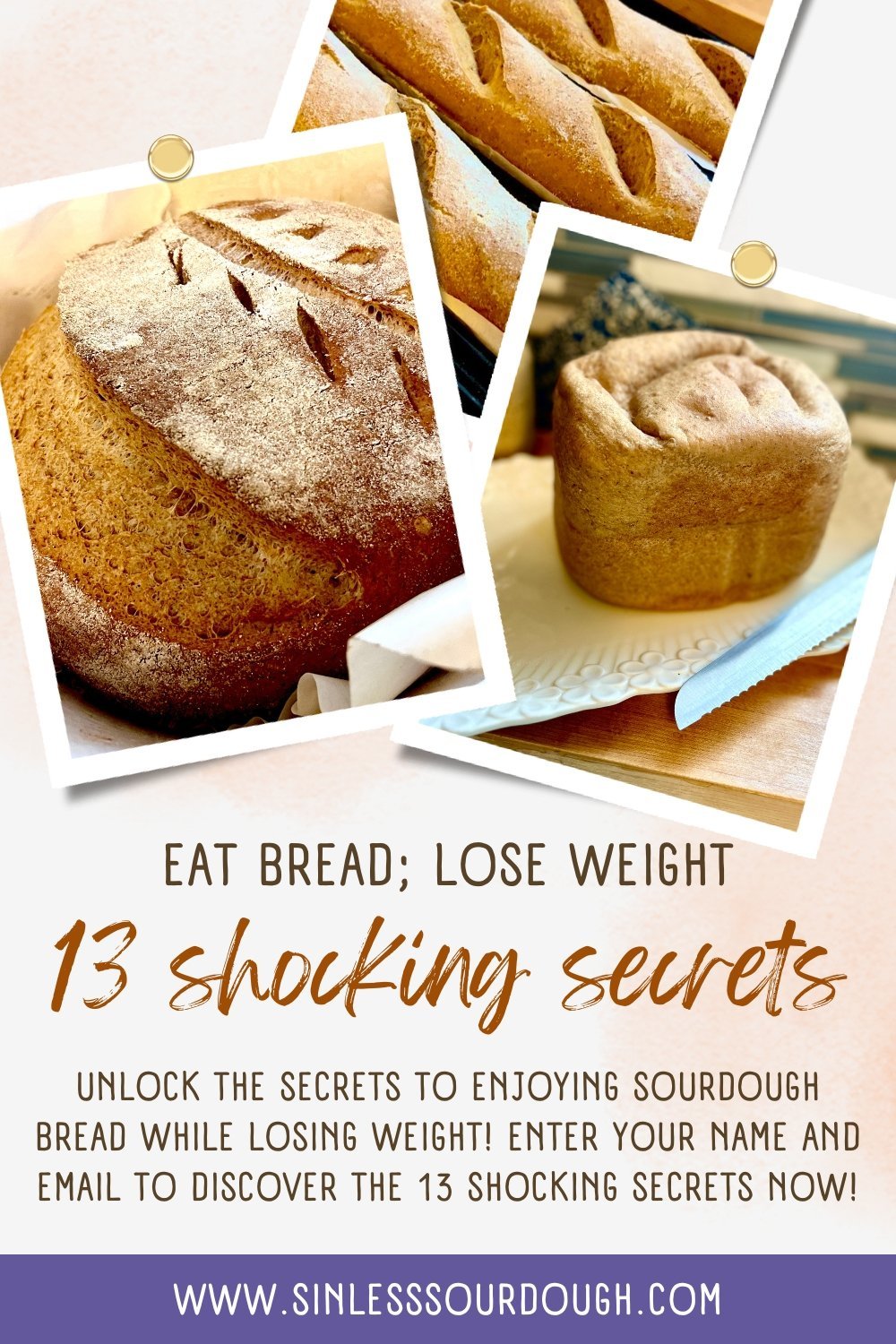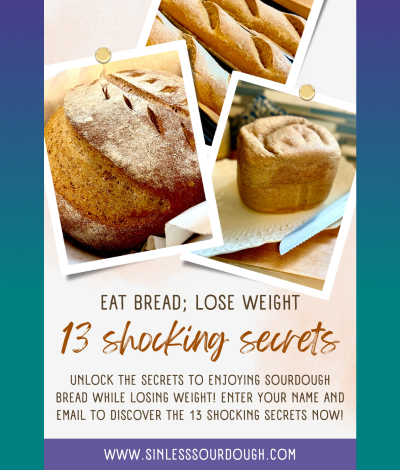KETO BONE BROTH FAST; THE ULTIMATE GUIDE

A Keto Bone Broth Fast is something I considered for a long time before attempting it recently. I consider it a “Fat Fasting Strategy.” My husband and I are heading to Honolulu, Hawaii for our 4th wedding anniversary. Fasting while flying is an effective way to reduce jet lag. This works for me. I tried this in the 90’s. For the flight from Toronto to Beijing, China, I fasted. This remedy proved to be highly effective for me. After flying for 24 hours, I got off the plane and made my way to the hotel. I put my bags in my room and went straight to the hotel gym. Eight miles seemed like a breeze.
A Keto Bone Broth Fast seems more appropriate for me, now at age 61. I wanted to try this fast in advance to see if I could sustain a 3 day version for our anniversary vacation. The flight to Honolulu with a long layover in Vancouver is about 18 hours. I know I need something more substantial this time, other than just water. A Keto Bone Broth Fast is ideal. For me, the Keto Bone Broth Fast is more appropriate for my age and metabolism than just water or just bone broth. There’s a difference.
Well I tried the Keto Bone Broth Fast and absolutely loved it!
I love losing those extra few pounds. I experienced better sleep, more energy, and a good mood. The first day is the toughest, Day 2 is easier. By day 3 I was not at all hungry. My stomach felt calm and peaceful without all that digestion. I also experienced all the healthful benefits of this fast. You can do a Keto Bone Broth Fast in several ways. I talk about this below.
I’ve put together this Keto Bone Broth Fast ultimate guide to share with you about this program so you can decide if it’s ideal for you. Before we move, please read the disclaimer at the end of this guide (blog). The Keto diet and the Keto Bone Broth Fast are not for everyone.
WHAT IS A KETO BONE BROTH FAST?
A Keto Bone Broth Fast combines aspects of the ketogenic diet combined with bone broth consumption. There are many types of fasts. This Keto version combines bone broths, herbal teas, and water at specific times of the day. The addition of fat to this fast also helps with satiety and offers many additional benefits.
WHAT ARE THE BENEFITS OF A KETO BONE BROTH FAST?
Since the Keto Bone Broth Fast allows you to go into ketosis or maintain ketosis and therefore use fat as fuel, you may notice additional weight loss. Some people use this Keto Bone Broth Fast as a tool to start the Keto diet or for weight management. Because this fast is low in calories and helps to reduce cravings, it may contribute to short-term weight loss. It’s up to you to maintain your Keto diet or low-carb lifestyle afterwards. Fasting can help balance blood sugar, increase focus, reduce hunger, control appetite, and provide energy.
Bone broth is full of essential nutrients like calcium, magnesium, and phosphorus. It also contains collagen, gelatin, and amino acids that are easy to digest. The Keto Bone Broth Fast may also help to improve your digestion by promoting the health of your gut lining. The collagen and gelatin in bone broth is believed to support the integrity of your gut mucosa. For this reason, some experts say that the fast can help with conditions like leaky gut syndrome. The collagen and other compounds in your bone broth are also beneficial to your joints, especially if you have osteoarthritis.
The collagen promotes healthy skin and aging. Amino acids in bone broth can help reduce body inflammation. Researchers need to conduct more studies to establish the scientific validity of bone broth fasting for these purposes. I believe the Keto Bone Broth Fast may also help in detoxifying the body, supporting liver function, and stimulating autophagy.
What is Autophagy?

Autophagy
The stimulation of the autophagy process is the main reason I like the Keto Bone Broth Fast. It takes 3-Days (72 hours) before your body begins this cellular process. Autophagy plays a vital role in helping us maintain the health and balance of our body’s cells. The term “autophagy” comes from the Greek words “auto.” This means “self.” “Phagy,” means “eating” or “to devour.” So the term autophagy refers to the process by which our cells “eat” or “digest” their own damaged or dysfunctional cellular components. These components may be proteins, organelles, and other cellular structures.
This process can create energy and fight infections by breaking down cells and removing viruses and bacteria. Autophagy may help cells and organisms live longer and healthier lives. Diseases such as cancer, metabolic disorders, and neurodegenerative disorders can arise because of autophagy issues. Autophagy, as a therapeutic process, remains an area of ongoing research. Remember, fasting is not suitable for everyone. Fasting may have side effects or risks, especially for those with other or certain medical conditions.
I’m going to say this a few times throughout this guide…be sure to consult your health care provider or doctor before doing a Keto Bone Broth Fast.
SHOULD YOU FAST IF I HAVE HEART ISSUES?

Seek Medical Advice
If you have heart issues, speak with your doctor before beginning this fast. If you do this fast for a prolonged timeline, it may lead to nutrient deficiencies, such as potassium and magnesium. Both nutrients are important for heart health. If your health care provider or doctor says you can do the Keto Bone Broth Fast, make sure you stay away from saturated fats like coconut oil or regular butter. Stick to healthy fats and grass-fed butter. Use grass-fed bones for your beef broths. Remember that the effects of a Keto Bone Broth fast can vary from person to person.
WHAT IS THE RECOMMENDED DURATION OF A FAST?
The recommended duration for a keto bone broth fast can vary depending on your goals and preferences. Here are some of the most common durations that you can consider for a keto bone broth fast:

Intermittent Fasting
Intermittent Fasting:
This is a common process that Keto folks use all the time on their diet. Rather than an extended fast, you incorporate keto bone broth fasting into an intermittent fasting routine. For example, you may already have a daily fasting window of 16-18 hours. You break this fast with a cup of bone broth with added fats.
24-Hour Fast:
On this fast, you consume only bone broth with added healthy fats. This length of fast can be an ideal introduction to the practice. If you are already following a keto diet, this 24-hour period will most likely allow your body to experience ketosis.
48 Hour Fast:
The 48 hours fast involves two consecutive days of consuming Keto bone broth, fats, and other liquids. This time period will allow your body to enter a deeper state of ketosis.
3-Day Fast:
This is my favorite fast because your body will experience health benefits that you may not experience on shorter fasts. In a 72-hour fast, you will probably go into a deeper state of ketosis and experience autophagy. This fast can include DNA repair and the removal of damaged proteins. The body removes damaged cells and components through a process called autophagy. Longer fasts have a more impact on improving your insulin sensitivity. Improved insulin sensitivity can help regulate blood sugar levels and reduce the risk of type 2 diabetes.
This fast gives your digestive system time to rest and reset, promoting the growth of good gut bacteria and reduces gut inflammation. Fasting for 3 days can also lead to hormone level changes. You will experience an increase in human growth hormone (HGH). The increase of HGH will help your body preserve muscle, burn fat, and improve your metabolism. You may also experience mental clarity and focus because of greater ketone production.
Extended Fast:
If looking for significant weight loss or the potential for greater therapeutic benefits, you can extend the fast to several days. Keep in mind that you need to plan this process carefully and seek professional guidance before attempting it.
Overall:
You need to talk to a healthcare professional or doctor to know how long you should do a Keto Bone Broth Fast. It’s also crucial that you are adequately hydrated and meet your nutritional needs, during a fast. If you feel dizzy, tired, or starving, talk to your doctor. Remember that fasting is not suitable for everyone. Be careful and make informed decisions about fasting based on your health and situation.
WHAT SHOULD I AVOID WHILE ON A KETO BONE BROTH FAST?
HOW CAN I STAY HYDRATED DURING A FAST?

Homemade electrolyte drink
On this fast you will want to add healthy fats to your broth. Healthy fats are monounsaturated and polyunsaturated. Olives, avocado, almonds, seeds, fish, and seals (only in Canada) contain these healthy fats.You can include saturated fats in your Keto Bone Broth Fast. But be sure to eat these fats in moderation — whether you’re fasting. Eating too much saturated fat can increase the risk of heart disease. Saturated fats added to the
Keto Bone-Broth Fast include MCT oil, grass-fed butter and coconut oil. Adding a small amount of MCT oil to your fast is possible. Start off with a half teaspoon. If your digestive track can take more, increase the dosage to 1 teaspoon per day. You can add grass fed butter as it is healthier than classic butter. First, the cows are less likely to be given antibiotics and growth hormones. Grass-fed butter is higher in Omega-3 and Omega-6 fatty acids. It contains more Conjugated Linoleic Acid (CLA) that offers many health benefits, such as anticancer properties. Grass-fed butter is also higher in K2, vitamin A, and antioxidants.
HOW DOES A KETO BONE BROTH FAST WORK?
During this fast, you drink bone broth, water, and herbal teas throughout the day, and have fat when you feel hungry or weak. The fat will help you feel satiated, give you more energy, improve your mental energy, help with digestion and keep you in ketosis. Pre-made bone broth is available for purchase in both liquid and powder forms. You can also make bone broth at home from scratch. You can include low glycemic vegetables in the broth for added nutrition and flavor. The vegetables are strained from the broth before consumption. (Recipes below).
To make bone broth, you slowly cook the bones and connective tissues to extract its minerals, collagen, amino acids, and other nutrients. This process creates a nutrient-rich liquid. The slow-cooking process also releases in the liquid the 5th taste sensation of umami. Umami is the Japanese word for yummy and refers to depth and roundness of flavor. This taste sensation helps give you that feeling of satisfaction and calmness after drinking the bone broth.
HOW LONG DOES A KETO BONE BROTH FAST LAST?
The duration of your Keto Bone Broth Fast will depend on you! The fast can range from 24 hours to several days. If undertaking this fast for the first time, talk to your health provider or medical doctor first. If you get the-okay”, then start with a 24-hour fast to see how you feel. Your fast length depends on your age, metabolism, health, meds, goals, and tolerance. Again, that’s why you need to talk to your doc first before attempting this plan.
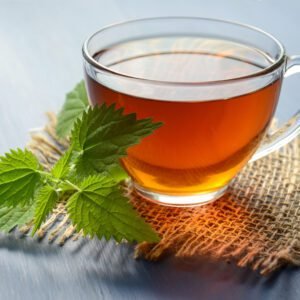
Herbal Tea
WHAT ARE KETO EXOGENOUS KETONES?
Exogenous ketones are a supplement that may help you get into a ketogenic state quicker. It comes in a powder form that dissolves in water. This makes it appropriate for the fast.
I say “may” get you into a ketogenic state because there is debate whether this is true. But that’s not why I take this supplement. I add exogenous ketones to my Keto Bone Broth Fast because it’s a beta-hydroxybutyrate (BHB) formula. This formula boosts my athletic endurance and mental performance during workouts. When I take this supplement added to liquid, I never experience that 3:00 p.m. energy dip and intense hunger pain. I can continue to write until it’s time to work out in the early evening.
Ketones Support Weight Loss: Ketones promote increased metabolism, weight loss and enhanced brain function
Ketones Support Endurance: Drinking Ketond Advanced Ketones can help an athlete consuming carbohydrates last longer during an activity without having to re-fuel.
How Ketones Work: Ketond provides you with a powerful, natural, and clean fuel for the mind and body that is 28% more efficient at generating energy than carbohydrates and sugar alone.
Easy To Make, Delicious To Drink: Just mix with water, shake, and enjoy the metabolism-boosting benefits
Proven Formula For Results: Formulated with patented and proven BHB ketones that your body can put to work quickly
CAN YOU EAT SOLID FOO ON A KETO BONE BROTH FAST?
On this Keto Bone Broth fast, you must refrain altogether from solid foods, even if they are Keto-friendly. Remember that to get into or remain in ketosis, your carbohydrate intake needs to remain very low. You’ll get some carbs from the vegetables cooked in the bone broth. During this fast, avoid all solid and liquid carbohydrates like fruit juice or energy drinks with sweeteners.
CAN I TAKE A MULTI-VITAMIN ON A KETO BONE BROTH FAST?
I know that the whole point of a fast is to give your digestive system a break to allow your body to utilize stored energy. But I am an advocate of taking liquid vitamins and supplements during a Keto Bone Broth Fast to ensure you are getting the nutritional support you need. Choose high-quality supplements from reputable brands to ensure that you are getting the nutrients you need and to avoid potential contaminants. I am an advocate of whole food vitamins. Common supplements needed during fasting may include electrolytes (sodium, potassium, magnesium) and vitamins like vitamin D, B vitamins, and vitamin C.
Pay attention to how your body responds to the supplements. If you experience any adverse reactions or discomfort, consult your healthcare provider or doctor immediately.
CAN I SIP COFFEE ON A BONE BROTH FAST?

Coffee
Coffee is the primary reason I enjoy the Keto Bone Broth Fast over other programs. You can sip coffee black or with added cream or black with grass-fed butter. Remember, you can include fat in your diet while following this fasting program. I would stick to only 1 coffee per day. On this fast, caffeine can increase your heart rate, causing a feeling of anxiety. Remember, coffee is a diuretic, so make sure you stay hydrated.
CAN YOUR FAST INCLUDE BROTHS FROM FISH, CHICKEN, AND BEEF?
Yes, a bone broth fast can include a variety of broths made from different animal sources, such as chicken, fish, and beef. The choice of broth depends on your preference and dietary restrictions. Each type of broth has its own flavor and nutritional profile, so you can choose the one that suits your taste and dietary needs. Here’s a overview of each type:
To make chicken bone broth, you simmer chicken bones, like the carcass of a roasted chicken, with water and sometimes vegetables and herbs. It has a milder flavor compared to beef broth and is rich in nutrients like collagen and amino acids.
To make fish bone broth, one typically simmers fish bones, fish heads, or seafood shells. It has a distinctive seafood flavor and is an excellent source of nutrients like omega-3 fatty acids, beneficial for heart and brain health.
To make beef bone broth, you simmer beef bones, often with marrow like knuckles and joints. Beef bone broth possesses a savory taste and high collagen content, making it a popular choice for joint health support. A bone broth fast can become monotonous if you stick to one type of broth throughout. You can drink one type of broth the whole time or switch it up for variety. Mixing broths can create a balanced flavor profile. For instance, you might find chicken broth milder and beef broth richer, so combining them can provide a satisfying taste experience. Various broths can make the fasting experience more enjoyable.
By including multiple options, you can accommodate any dietary restrictions or preferences. You can tailor your bone broth fast to your nutritional goals. For example, if you’re looking for more collagen, you can prioritize beef bone broth. If you want a lighter option, you can include more chicken or fish broth.
Be mindful of the overall calorie intake and ensure you’re still following the fasting regimen you’ve set for yourself. For the healthiest bone broths, use animal sources that are organic, grass-fed and/or pasture-raised and of high quality. You can adjust the broth recipe to match your dietary needs while still following the bone broth fast principles. I’m saying this again…Check with a healthcare professional or doctor before starting a bone broth fast, especially if you have health or dietary concerns. They can make sure your fasting plan is safe and right for you.
WHAT EQUIPMENT DO YOU NEED TO PREPARE THE BROTH?
To prepare this broth, you’ll need a roasting pan, large stockpot, and/or slow cooker.
HOW DO YOU PREPARE FISH BONE BROTH?
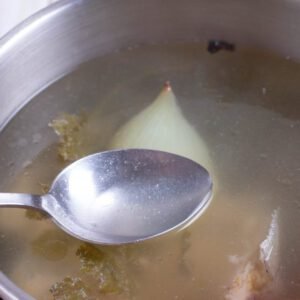
You canbuyt fish bones from a variety of sources. You can also ask the butcher at your local grocery store if they can give you bones. If buying fresh salmon for the bones, keep in mind that 25 to 30% of the total weight of the fish comes from the bones (including the head and tail). So getting 2 pounds of bones for the below recipe, you’ll need to buy about 6 to 8 pounds of salmon. Remember, you can always freeze the flesh in meal-sized portions to eat at a later date.
Ingredients:
Salmon bones and heads (about 1-2 pounds)
Water (enough to cover the bones and more as needed)
2 leeks, chopped
3 celery stalks, roughly chopped
4 cloves of fresh garlic
A handful of parsley, thyme, and/or bay leaves
Pink salt and freshly ground black pepper, to taste
Freshly squeezed lemon juice (for added flavor)
Instructions:
Rinse the salmon bones under cold running water to remove any residual blood, scales, or impurities. Place the bones on a roasting pan coated with oil. Roast the bones at 350°F (175°C) for about 20-30 minutes or until they turn light brown. Remove the bones from the oven. Set aside.
In a large stockpot or slow cooker, place the roasted bones, chopped vegetables, garlic, and fresh herbs. Add enough cold water to cover the ingredients.
If cooking on the stove, bring water to a gentle boil. Do not let the water boil vigorously. If the boil is too intense, the broth will be cloudy. Reduce the heat to low and simmer. Occasionally, skim off any foam or impurities that rise to the surface of the simmering broth. Let the broth simmer on low for about 2-4 hours. Add more water as needed to keep the broth at your desired taste.
If you don’t add more water, the broth may become too concentrated. Judge for yourself. Using the slow cooker or Instant Pot allows you to maintain your daily or nightly routine without having to watch the stove or keep the burners on for a long time. Season the broth with salt and pepper to taste. Add lemon juice if you choose. The lemon’s acidity nicely offsets the umami flavor of the bones. Use a fine-mesh strainer or cheesecloth over a strainer, strain the bones, vegetables and herbs from the broth. Allow the broth to cool to room temperature before refrigerating or freezing it.
HOW DO YOU PREPARE CHICKEN BONE BROTH?

Chicken Strained Bone Broth
Chicken broth is nutritious and flavorful. You can get chicken bones from a variety of sources. Aask the butcher at your local grocery store if they can give you chicken bones. If buying fresh chicken for the bones, keep in mind that 50% of the total weight of the chicken comes from the bones (including the head and tail). So getting 2 pounds of bones for the below recipe, you’ll need to buy about 4 pounds of chicken. Here’s a basic chicken bone broth recipe:
Ingredients:
Chicken bones (such as leftover chicken carcass, necks, wings, or backs)
Water (enough to cover the bones)
2 leeks, chopped
3 celery stalks, roughly chopped
4 cloves of fresh garlic
A handful of parsley, thyme, and/or bay leaves
Pink salt and freshly ground black pepper, to tasteFreshly squeezed lemon juice (for added flavor)
Instructions:
Rinse the chicken bones under cold running water to remove any residual blood or impurities. Place the bones on a roasting pan coated with oil. Roast the bones at 350°F (175°C) for about 20-30 minutes or until they turn light brown. Remove the bones from the oven. Set aside.
In a large stockpot or slow cooker, place the roasted bones, chopped vegetables, garlic, and fresh herbs. Add enough cold water to cover the ingredients. If cooking on the stove, bring water to a gentle boil. Do not let the water boil vigorously. If the boil is too intense, the broth will be cloudy. Reduce the heat to low and simmer. Occasionally, skim off any foam or impurities that rise to the surface of the simmering broth. Let the broth simmer from 4 hours to 24 hours or more. Remember that the longer you simmer, the richer the umami flavor in the resulting broth.
Season the broth with salt and pepper to taste. You can adjust the seasoning as needed during the cooking process. Check the broth periodically. Add more water as needed to keep the broth at your desired taste. If you don’t add more water, the broth may be too concentrated. Once the broth has simmered to your satisfaction and has developed a flavorful taste, remove it from the heat. Use a fine-mesh strainer or cheesecloth to strain the broth into a clean container, discarding the solids (bones, vegetables, and herbs). Allow the broth to cool to room temperature before refrigerating or freezing it. You can store chicken bone broth in the refrigerator for a few days or freeze it for longer storage after allowing it to cool to room temperature..
HOW DO YOU PREPARE BEEF BONE BROTH?

Beef Bone Broth
Beef bone broth is nutritious and flavorful. You can get beef bones from a variety of sources. Ask the butcher or the butcher at your local grocery store if they can give you any beef bones. If buying fresh beef for the bones, keep in mind that you’ll need about 4 to 5 pounds beef to get 2 pounds of bones for the below recipe. This weight also depends on the cut of beef you’re purchasing. Here’s a basic beef bone broth recipe:
Ingredients:
Beef bones (such as marrow bones, knucklebones, or oxtails)
Water (enough to cover the bones)
Vegetables (optional, for flavor):
1 onion, roughly chopped
2-3 carrots, roughly chopped
2-3 celery stalks, roughly chopped
A few cloves of garlic (optional)
A handful of fresh herbs (such as parsley, thyme, or bay leaves)
Salt and pepper, to taste
Instructions:
Choose a variety of beef bones for the broth. Marrow bones, knucklebones, and oxtails are excellent choices. You can use raw or roasted bones.
Rinse the beef bones under cold running water to remove any residual blood or impurities. Place the bones on a roasting pan coated with oil. Roast the bones at 350°F (175°C) for about 20-30 minutes or until they turn light brown. Remove the bones from the oven. Set aside.
In a large stockpot or slow cooker, place the roasted bones, chopped vegetables, garlic, and fresh herbs. Add enough cold water to cover the ingredients.
If cooking on the stove, bring water to a gentle boil. Do not let the water boil vigorously. If the boil is too intense, the broth will be cloudy. Reduce the heat to low and simmer. Occasionally, skim off any foam or impurities that rise to the surface of the simmering broth. Let the broth simmer for a long time to extract the flavors and nutrients from the bones. You can simmer it for anywhere from 4 hours to 24 hours or more. Remember that the longer you simmer, the richer the umami flavor in the resulting broth.
Season the broth with salt and pepper to taste. You can adjust the seasoning as needed during the cooking process. Check the broth periodically. Add more water as needed to keep the broth at your desired taste. If you don’t add more water, the broth will become too concentrated. Once the broth has simmered to your satisfaction and has developed a flavorful taste, remove it from the heat. Use a fine-mesh strainer or cheesecloth to strain the broth into a clean container, discarding the solids (bones, vegetables, and herbs). Allow the broth to cool to room temperature before refrigerating or freezing it. You can store chicken bone broth in the refrigerator for a few days or freeze it for longer storage after allowing it to cool to room temperature.
HOW DO YOU ENHANCE SATIETY ON THE FAST?
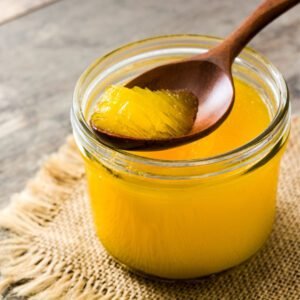
Ghee
Once your fish, chicken, or beef bone broth is hot and ready to sip, stir in a teaspoon of healthy fat like grass-fed butter, ghee, olive oil, or avocado oil. These fats should be high in quality and organic. If you find that a teaspoon of fat is not enough to keep you feeling satisfied, add a tablespoon.
CAN I DRINK HERBAL TEA DURING A KETO BONE BROTH FAST?
Yes, you can typically drink herbal tea during a keto bone broth fast. Herbal teas are a popular choice for fasting because they have few calories and add flavor and hydration. Here are some considerations when incorporating herbal tea into your keto bone broth fast: Opt for herbal teas, meaning they do not contain added caffine, sugars, sweeteners, or significant calories. Common choices include peppermint tea, chamomile tea, ginger tea, and various herbal blends. Stay clear of sweeteners. They can raise insulin levels and interfere with ketosis. Pay attention to how your body responds to herbal teas during the fast. Herbal teas may suppress appetite or soothe, but some choose to only drink bone broth and water.
Consult with a healthcare professional or doctor before starting your fasting routine. Overall, herbal teas can be a helpful and enjoyable addition to a keto bone broth fast. They can provide variety in flavors and help you stay on track with your fasting goals while remaining in a state of ketosis. It’s important to choose teas that work best for you during fasting.
WHAT ARE MISTAKES TO AVOID DURING THE FAST?
To ensure a successful Keto Bone Broth fast, it’s crucial to steer clear of common pitfalls.
Here are some pitfalls to watch out for and avoid:
Pitfalls:
- Firstly, failing to plan can set you up for failure. Make sure to plan your fasting days meticulously, ensuring you have an adequate supply of bone broth and mentally preparing yourself for the fast. Weekends can be an ideal time to embark on this journey.
- Maintaining proper hydration is essential during fasting. While bone broth contributes to hydration, don’t overlook the importance of drinking plain water.
- Be cautious of consuming excessive fats, as they can significantly increase calorie intake. Pay attention to the amount of added fats you incorporate into your fasting regimen.
- Consider your nutrient intake, especially if fasting for an extended period. Taking a multivitamin or electrolyte supplements can help prevent nutrient deficiencies.
- Listen to your body’s hunger signals. If you experience severe hunger or discomfort, it may be necessary to break the fast and try again later.
- Avoid fasting for excessively long periods without proper guidance and monitoring, as it can lead to adverse effects on your health.
- Introduce variety into your fasting routine to prevent monotony and sustain motivation. Experiment with different flavors and spices in your bone broth to keep the experience enjoyable.
- Remember that fasting may not be suitable for everyone. Consult with a healthcare professional or doctor before starting any fasting regimen, especially if you have underlying health conditions.
- Approach your fasting journey with realistic expectations, understanding that results will vary from person to person. Ultimately, fasting should be approached mindfully, focusing on promoting overall well-being rather than deprivation.
ARE THERE SIDE EFFECTS OF A KETO BONE BROTH FAST?

Mood Swings
When comparing powdered bone broths to homemade versions, several key factors come into play:
Key Factors:
- Firstly, consider the added ingredients. Some powdered bone broths may contain additives, flavorings, and preservatives to enhance taste and shelf life. These additives can dilute the nutritional quality of the broth compared to homemade varieties.
- The quality of ingredients is another crucial consideration. Homemade broths often utilize high-quality, organic, and grass-fed animal sources, which can significantly impact the nutrient content of the broth.
- Collagen content is essential for reaping the potential health benefits of bone broth. Homemade broths, especially those made with connective tissues, tend to have higher collagen levels compared to powdered versions.
- Customization options are limited with powdered bone broths. Homemade broths offer the flexibility to add various herbs, spices, and vegetables, enhancing both flavor and nutritional content.
- In terms of digestibility, some individuals find homemade bone broths to be more easily digestible and soothing to the digestive system.
- Powdered bone broths boast convenience and a longer shelf life, making them suitable for those seeking a quick protein and nutrient boost. However, it’s essential to scrutinize the label for ingredients and nutritional content when opting for powdered varieties. Ultimately, the choice between powdered and homemade bone broths depends on individual preferences and dietary needs.
ARE ORGANIC BONES BETTER FOR A HOMEMADE BONE BROTH?
HOW DO YOU START AND BREAK A KETO BONE BROTH FAST?
If you have not been on a Keto or low-carb diet, then moving from a regular regiment to the fast can be dramatic. Take a day or 2 before the fast to consume more soups and less soid foods. Get your body prepared. When ending a bone broth fast, it’s important to reintroduce solid foods gradually to avoid digestive discomfort. Start with easily digestible foods like soups, cooked low-glycemic (Keto friendly) vegetables and lean proteins.
WHAT ARE RECIPES YOU CAN USE TO START OR BREAK YOUR KETO BONE BROTH FAST?
Fresh Tomato Soup (Heart Healthy)
WHAT ARTICLES CAN I READ TO PROMOTE WEIGHT LOSS?
BEST KETO CHICKEN QUARTER DINNERS
HOW LONG WILL BONE BROTH LAST IN THE REFRIGERATOR?
To maintain the freshness and safety of homemade bone broth, proper storage and refrigeration are crucial.
Here are some guidelines to follow:
Guidelines:
- Firstly, allow the freshly made bone broth to cool to room temperature before refrigerating it to avoid bacterial growth.
- Use airtight containers or glass jars with tight-fitting lids to store the bone broth, ensuring they are sanitized to prevent contamination.
- Divide the broth into smaller portions before refrigerating to facilitate cooling and reheating and prevent bacterial growth.
- Seal the containers tightly to prevent air and moisture from entering, which can cause spoilage and off-flavors.
- Label each container with the date of preparation to track its refrigeration time accurately.
- Store the bone broth on a refrigerator shelf, avoiding the door or front where temperatures fluctuate more and keeping it away from raw meats to prevent cross-contamination.
- Maintain the refrigerator temperature below 40°F (4°C) to inhibit bacterial growth, using a thermometer for accuracy.
- Before using refrigerated bone broth, inspect it for signs of spoilage such as off odors, unusual colors, or mold growth, and discard if necessary.
- When reheating refrigerated bone broth, ensure it reaches a boiling point (at least 212°F or 100°C) to kill any potentially harmful bacteria.
- If you can’t consume the bone broth within 4-5 days, freeze it in smaller portions for long-term storage, ensuring it remains safe to use.
- Be cautious and discard bone broth if unsure about its safety to prevent any risks of foodborne illness.
CAN YOU FREEZE BONE BROTH?
Freezing bone broth is an excellent way to preserve its quality for extended periods, ensuring it’s always available when needed.
Here are some tips for freezing and storing bone broth:
Storage Duration:
Bone broth can be safely frozen for 4 to 6 months, maintaining its quality. In a deep freezer, it may last up to a year or more, although using it within the recommended timeframe ensures the best taste and texture.
Thawing:
When ready to use, thaw the frozen bone broth in the refrigerator over several hours or overnight for safe thawing. Alternatively, use the microwave’s defrost setting for quicker thawing, avoiding room temperature thawing to prevent bacterial growth.
Reheating:
Once thawed, reheat the bone broth on the stove, in the microwave, or by preferred method, ensuring it boils before consumption to guarantee safety. Properly frozen bone broth retains its quality and flavor, making it versatile for various dishes like soups, stews, and sauces.
By following these freezing and thawing guidelines, homemade bone broth remains a convenient ingredient, ready for use whenever required.
Disclamer:
This guide is for informational purposes only. I am making no assurances or representations of any kind that you will attain any wellness success in using the information in this guide. I provided all the information with no representations or warranties. Please consult a qualified physician or psychologist for medical or mental health advice. Please talk to your doctor before starting any fitness or nutrition program or other activities described in our wellness content.. They can help answer questions you may have regarding any health condition or any other concerns or conditions that you may have. By interacting with this journal, you agree with this disclaimer.
Studies:
- UNUSUAL KETO INSTANT POT RECIPES FOR 2025 - April 27, 2025
- Boost Your Keto Diet with These Non-Alcoholic Wine Hacks - April 27, 2025
- 10 Unique & Healthy Mocktails You Need to Try - April 27, 2025


